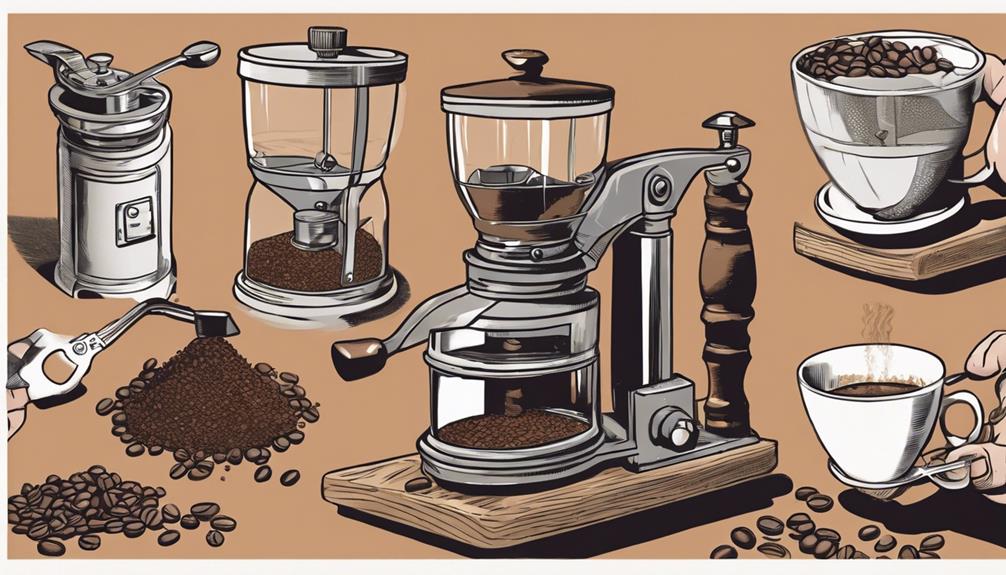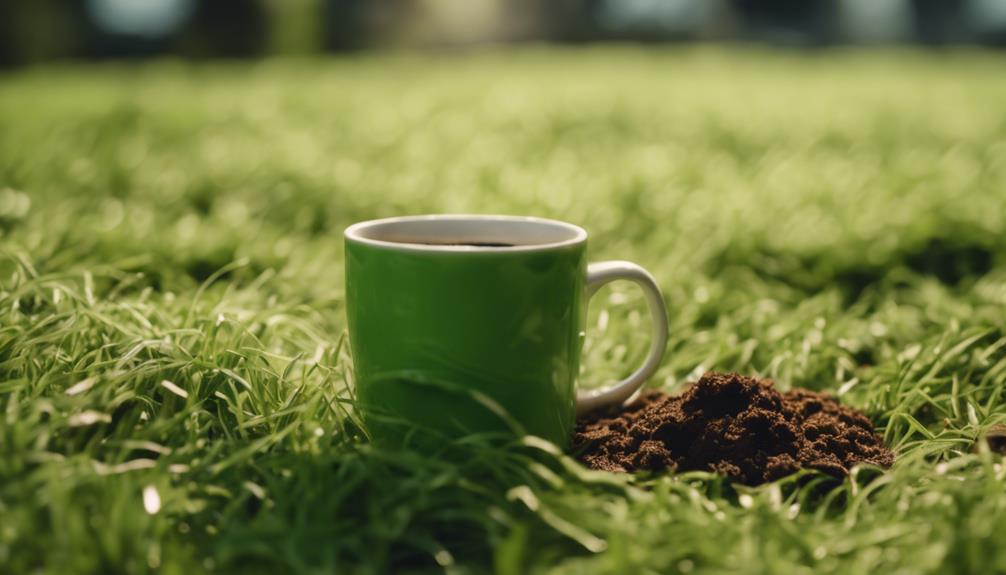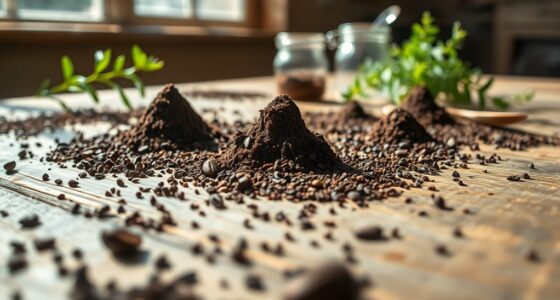Adjusting the size of your coffee grind can greatly impact the flavor of your brew. If the grind is too coarse, your coffee may end up lacking in flavor. On the other hand, if it is too fine, it might result in a bitter taste. To achieve the perfect brew, it is important to match the grind size with your specific brewing method. Coarser grinds are recommended for French press, while finer grinds are more suitable for espresso. Ensuring a consistent grind size is essential for achieving a consistently delicious taste each time. Remember, getting the grind size right is just the first step in perfecting the flavor profile of your coffee.
Key Takeaways
- Experiment with grind sizes to find ideal flavor balance.
- Adjust grind size for different brewing methods.
- Consistency in grind size ensures accurate extraction.
- Use burr grinders for precise and uniform grinding.
- Understand grind size impact on flavor intensity.
Understanding Coffee Grind Basics
Understanding the basics of coffee grind size is fundamental for improving your brewing skills and achieving a delicious cup of coffee. The grind size directly impacts how water interacts with the coffee during the brewing process, affecting the taste and overall flavor of your brew.
When you grind your coffee beans, the surface area of the grounds increases, allowing water to extract flavors more efficiently. If the grind is too coarse, the water will flow through too quickly, resulting in under-extracted coffee that tastes weak. Conversely, if the grind is too fine, the water will struggle to pass through, leading to over-extracted coffee that can taste bitter.
Using the right grind size for your brewing method is essential to achieving a balanced and flavorful cup of coffee. Experiment with different grind sizes using a quality grinder to find the perfect one that suits your taste preferences and brewing style.
Impact of Grind Size on Extraction
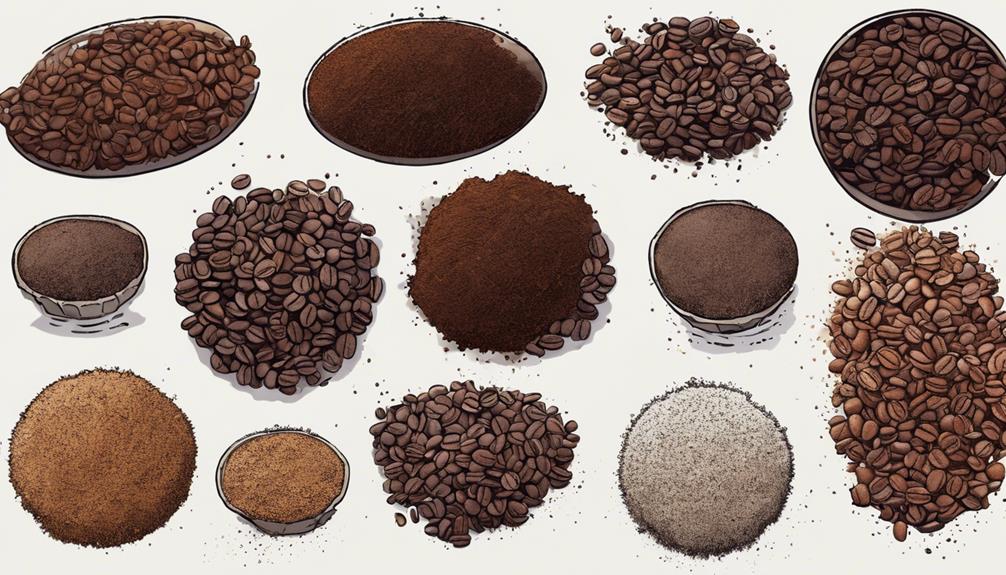
Grind size greatly influences the extraction process of coffee, directly affecting the flavor profile of your brew. The size of the coffee grounds determines the rate of flavor extraction during brewing. Finer grinds lead to a quicker extraction of coffee compounds, resulting in a more intense flavor profile. On the other hand, coarser grinds lead to a slower extraction process, influencing the taste profile of the brewed coffee.
To better understand the impact of grind size on extraction, consider the following table:
| Grind Size | Extraction Rate | Flavor Intensity |
|---|---|---|
| Coarse | Slower extraction | Lighter taste |
| Medium | Balanced extraction | Moderate flavor |
| Fine | Faster extraction | Rich, bold flavor |
Adjusting the grind size allows you to fine-tune the balance of acids, oils, and solids in your coffee, ultimately affecting the overall flavor intensity and quality of the brewed coffee.
Adjusting Grind Size for Brewing Methods
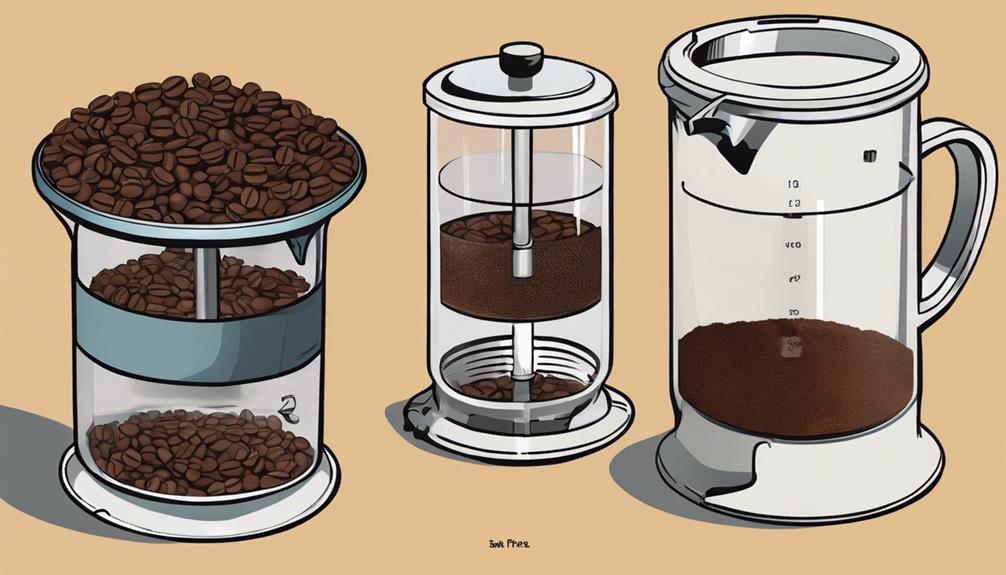
For best extraction and flavor, different brewing methods like espresso, pour-over, and French press each require specific grind sizes. Espresso demands a fine grind to slow down the extraction process and produce a concentrated shot with a rich crema.
On the other hand, pour-over coffee benefits from a medium grind that allows water to flow evenly through the grounds, extracting a balanced flavor profile.
French press brewing method requires a coarse grind to prevent over-extraction and bitter notes in the final brew.
Adjusting the grind size based on the brew method can significantly impact the taste of your coffee. If the grind is too coarse for espresso, the water will pass through too quickly, resulting in a weak and under-extracted shot.
Conversely, a fine grind in a French press can lead to over-extraction, causing bitterness in your coffee. Remember to also consider water temperature and brewing time when fine-tuning your grind size to achieve the perfect cup of coffee tailored to your preferences.
Consistency in Coffee Grind Size
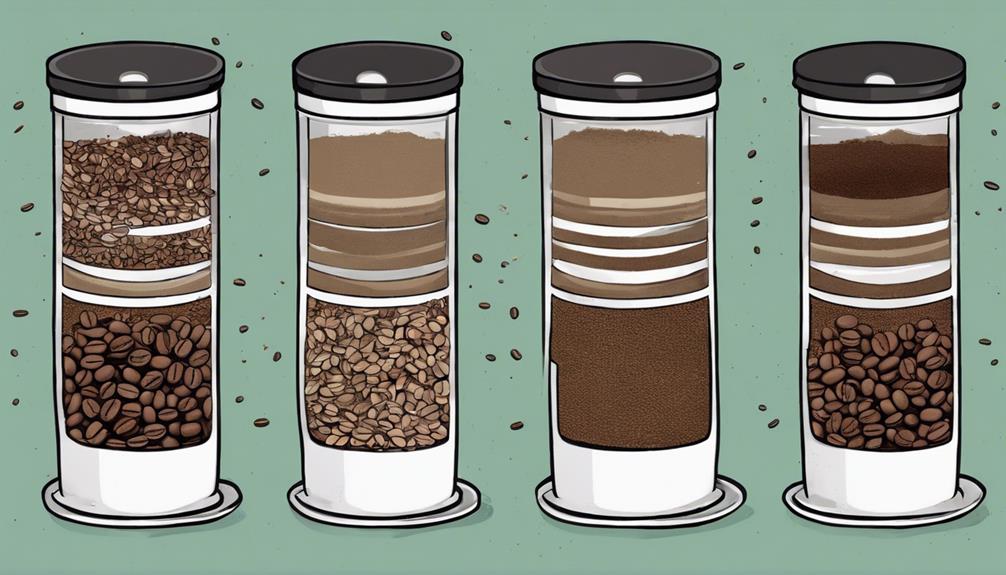
Achieving a steady coffee grind size is vital for extracting balanced flavors and maintaining the quality of your brewed coffee. When the coffee grounds are of uniform size, it allows for an even extraction of flavor compounds during the brewing process. Consistency in coffee grind size is essential to prevent under-extraction or over-extraction, which can negatively impact the taste of your coffee. Burr grinders are highly recommended for achieving a uniform grind size as they offer precision and control over the grinding process.
To highlight the significance of consistency in coffee grind size, consider the following table:
| Significance of Uniform Grind Size | Effects of Inconsistent Grind Size |
|---|---|
| Balanced flavor extraction | Under-extraction |
| Quality of brewed coffee | Over-extraction |
| Replicating recipes | Inconsistent taste |
Maintaining a steady grind size ensures that you can replicate recipes accurately and achieve the desired flavor profiles in your coffee brewing.
Importance of Grind Size in Brewing
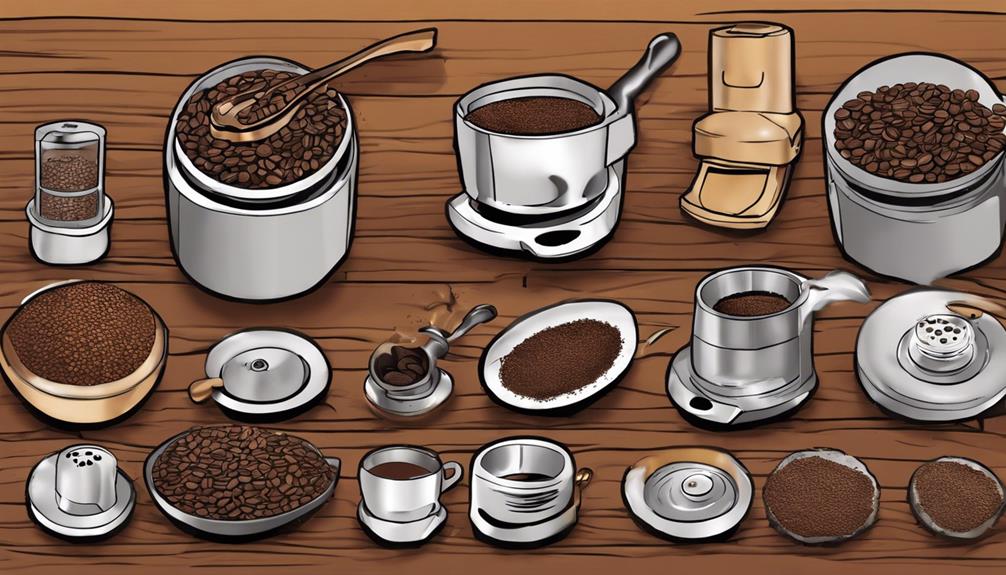
When brewing coffee, the size of your grind plays a critical role in determining the flavor and balance of your final cup. Understanding the importance of coffee grind size in brewing is essential for achieving the best results. Here's why it matters:
- Flavor Extraction:
The coffee grind size directly impacts the flavor extraction process. Finer grinds lead to quicker extraction, resulting in stronger flavors, while coarser grinds extract more slowly, offering a different taste profile.
- Brewing Methods:
Different brewing methods, such as French press or espresso, require specific grind sizes to achieve optimal extraction. Adjusting the grind size allows you to control the extraction rate, influencing the taste and strength of your coffee.
- Consistency and Balance:
Consistency in grind size is key to maintaining balance in your coffee. Understanding the relationship between grind size and water contact time helps achieve the best extraction strength and balance in every cup. By mastering grind size adjustment, you can tailor your coffee to suit your preferred taste profiles.
Frequently Asked Questions
How to Adjust Coffee Grinder Size?
To adjust your coffee grinder size, simply turn the dial or adjust the settings to make the grind finer or coarser. Experiment with different sizes based on your brewing method for the perfect cup of coffee every time. Adjusting your coffee grinder can make a significant difference in the taste and quality of your coffee. For example, if you are using a French press, a coarser grind is recommended to prevent over-extraction. On the other hand, for espresso, a finer grind is necessary to achieve the right extraction time. By adjusting your coffee grinder to the appropriate setting for your brewing method, you can enhance the flavor and aroma of your coffee.
How Do You Control Coffee Grind Size?
You control coffee grind size by twisting the dial on your grinder. Adjust to your preference for the perfect cup. Experiment with different settings to find the right balance of flavor and strength.
How to Find the Perfect Grind Size?
To find the perfect grind size, experiment with different options based on your brewing method and taste preferences. Fine-tune the grind to control extraction and enhance flavor. Use grind size to customize your coffee experience.
What Is the Best Coffee Grind Setting?
To find the best coffee grind setting, consider your brewing method. For French press, go coarse; for espresso, aim for a very fine grind. Adjusting the grind impacts flavor extraction, so play around to suit your taste.
Conclusion
To sum up, mastering the art of coffee grind size is essential to revealing the perfect brew. Remember, consistency is vital for achieving the best extraction and flavor.
Experiment with different grind sizes to find the ideal match for your preferred brewing method.
So, sip, savor, and stay knowledgeable with your grind size adjustments to enhance your coffee experience!
